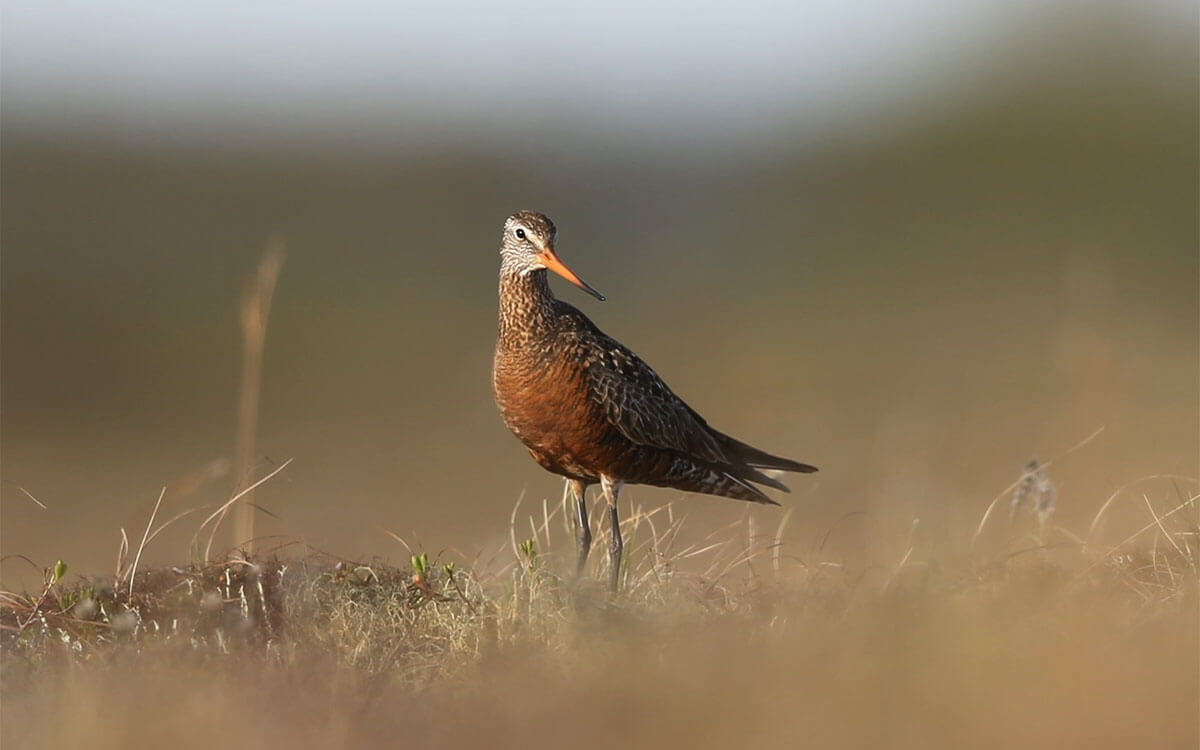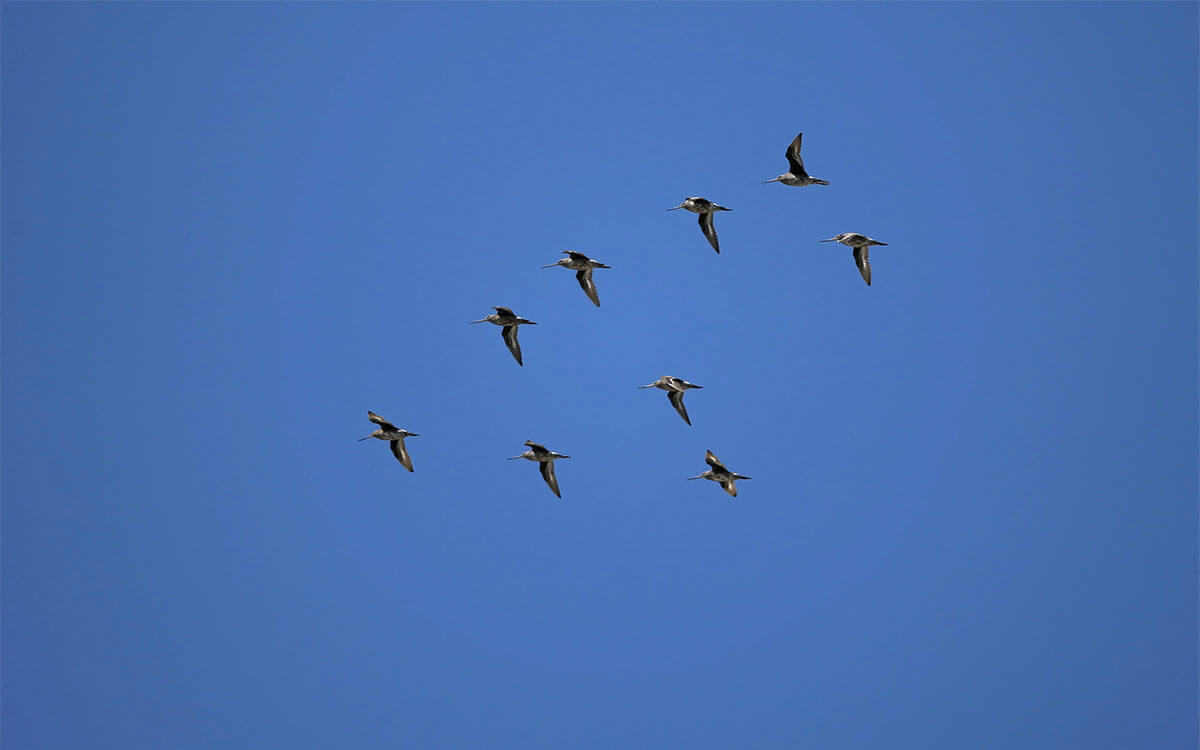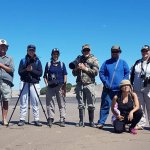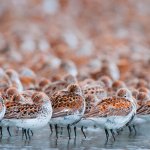Every year, over 21,000 Hudsonian Godwit (Limosa haemastica) fly from their breeding grounds in the Alaskan tundra to “winter” in Chiloé island, a round trip of over 30,000 km, to feed on the rich benthic invertebrate fauna existing in the coastal wetlands of the archipelago.
Because of the critical importance of these wetlands, the Fundación Conservación Marina, in conjunction with the WHSRN Executive Office and in coordination with local municipalities, recently submitted proposals for the creation of two new Nature Sanctuaries, for the bays of Curaco de Vélez and Villa Quinchao Bay, both with the support of numerous community organizations. These efforts have been made possible thanks to the David and Lucile Packard Foundation, in support of the implementation of the Conservation Plan for Migratory Shorebirds in Chiloé.


Left: A Hudsonian Godwit rests at sunset in the Chiloé wetlands. Right: A flock of Hudsonian Godwit in flight. Photos: Brad Winn.
Just recently, Nathan Senner of the University of South Carolina reported on his Twitter account that a Hudsonian Godwit made a 6-day nonstop flight from Chiloé to northern Kansas (USA), a distance of 9,350 km. The energy requirements for such a flight highlight the critical importance of the Chiloé wetlands for the conservation of shorebirds.
Regarding the submission of the proposals for sanctuaries, Juan José Donoso, head of the Division of Natural Resources and Biodiversity of the Ministry of the Environment, commented, “the wetlands of Chiloé are critical for shorebirds in the Pacific flyway, which is why they have been prioritized in the National Protection Plan for Wetlands 2018-2022, which seeks new mechanisms to guarantee their conservation and long-term management.”
For Washington Ulloa, mayor of the Municipality of Quinchao, “proposing almost 96 hectares of wetlands in the Bay of Quinchao as a Nature Sanctuary fills us with pride, commitment and responsibility, and creates an opportunity for environmental education, special interest tourism and engagement with the local community.”
Cristian Vidal, mayor of Curaco de Vélez, commented, “We hope that the assessment process is positive and that the Nature Sanctuary can soon be declared, so that we can use it as a new focus for local development in our community, associated with the conservation of this valuable natural heritage.”

A flock of Hudsonian Godwits in the eastern wetlands of Chiloé. Photo credit: José Cardenas Vejar.
Up until now and within the framework of the National Protection Plan for Wetlands, the Council of Ministers for Sustainability has approved the declaration of 12 wetlands as new Nature Sanctuaries, covering an estimated 190,500 hectares. This has included the recent designation of sanctuaries in three WHSRN sites: the Humedales de Maullin, the Desembocadura y Estuario del Río Maipo, and Bahía Lomas. Designation of the latter was approved by the Council of Ministers in 2019, with the official decree signed by the President of Chile just published (on 16 April 2020). This new 58,946 hectare sanctuary protects the most important wintering site in South America for rufa Red Knot Calidris canutus, and an additional 17,000 Hudsonian Godwit. The next step for Bahía Lomas is the development of a management plan for the sanctuary, a process which is being led by the Centro Bahía Lomas in coordination with the WHSRN Executive Office, and with the support of the BAND, Bobolink and National Fish and Wildlife Foundations.
Despite the crisis and restrictions related to the COVID-19 pandemic, important new achievements for the conservation of shorebirds in Chile continue apace!
For more information about these Nature Sanctuaries, please contact Diego Luna Quevedo, Conservation Specialist, WHSRN Executive Office, Manomet, Inc. diego.luna@manomet.org






